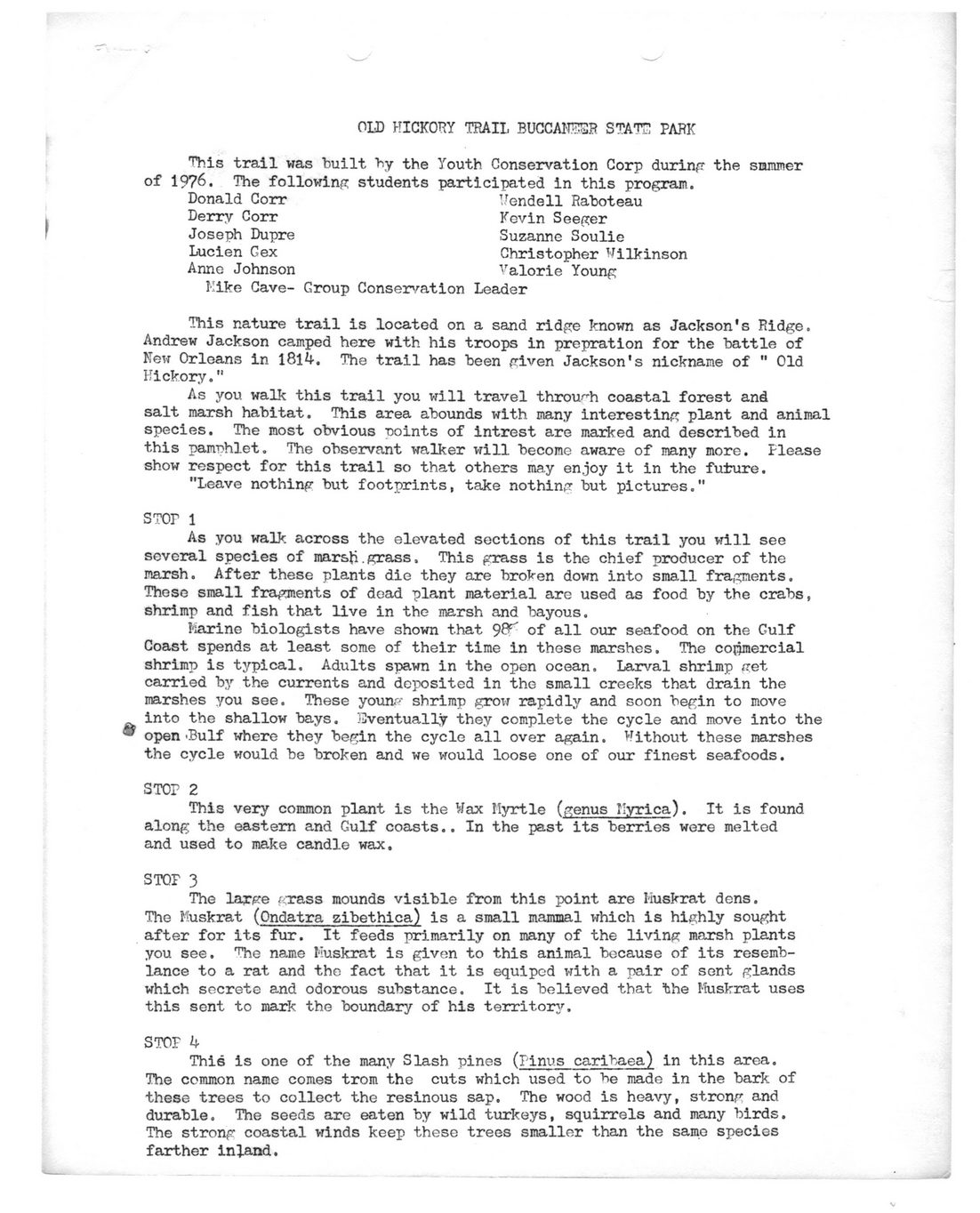This text was obtained via automated optical character recognition.
It has not been edited and may therefore contain several errors.
OLD HICKORY TRAIL BUCCA1TESR STATS PARK t 'I’his trail was built by the Youth Conservation Corp during the snmmer of 1976. The following students participated in this program. Donald Corr Uendell Raboteau Derry Corr Kevin Seeger Joseph Dupre Suzanne Soulie Lucien Gex Christopher Wilkinson Anne Johnson valorie Young Mike Cave- Group Conservation Leader This nature trail is located on a sand ridge known as Jackson's Ridge. Andrew Jackson camped here with his troops in prepration for the battle of New Orleans in 181^, The trail has been given Jackson's nickname of " Old Hickory." As you walk this trail you will travel through coastal forest and salt marsh habitat. This area abounds with many interesting plant and animal species. The most obvious tioints of intrest are marked and described in this pamphlet. The observant walker will become aware of many more. Please show respect for this trail so that others may en.joy it in the future. "Leave nothing but footprints, take nothing but pictures." STOr 1 As you walk, across the elevated sections of this trail you will see several species of marsh.grass. This grass is the chief producer of the marsh. After these plants die they are broken down into small fragments. These small fragments of dead plant material are used as food by the crabs, shrimp and fish that live in the marsh and bayous. karine biologists have shown that of all our seafood on the Gulf Coast spends at least some of their time in these marshes. The commercial shrimp is typical. Adults spawn in the open ocean. Larval shrimp /ret carried by the currents and deposited in the small creeks that drain the marshes you see. These younp- shrimp grow rapidly and soon begin to move into the shallow bays. Eventually they complete the cycle and move into the open>Bulf where they begin the cycle all over again. Without these marshes the cycle would be broken and we would loose one of our finest seafoods. STOP 2 This very common plant is the Wax Myrtle (genus I'yrica). It is found along the eastern and Gulf coasts.. In the past its berries were melted and used to make candle wax. STQF 3 The large /rass mounds visible from this point are Muskrat dens. The Muskrat (Ondatra zibethica) is a small mammal which is highly sought after for its fur. It feeds primarily on many of the living marsh plants you see. ^he name I-'uskrat is given to this animal because of its resemblance to a rat and the fact that it is equiped with a pair of sent glands which secrete and odorous substance. It is believed that the Muskrat uses this sent to mark the boundary of his territory. STOF 4 This is one of the many Slash pines (Pinus carihaea) in this area. The common name comes trom the cuts which used to be made in the bark of these trees to collect the resinous sap. The wood is heavy, strong and durable. The seeds are eaten by wild turkeys, squirrels and many birds. The strong coastal winds keep these trees smaller than the same species farther inland.

Buccaneer Park Old-Hickory-Trail-(1)